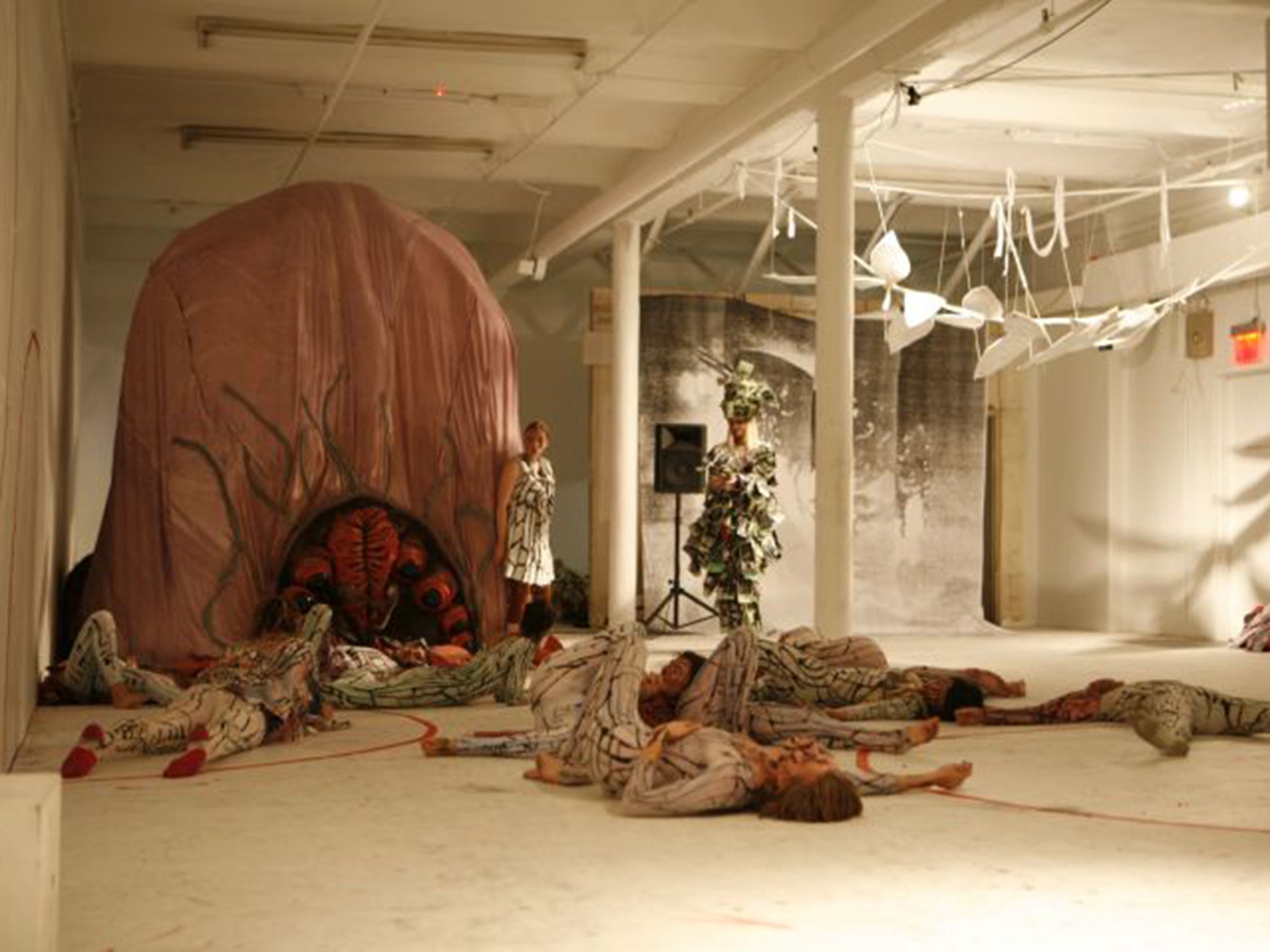Art installation based on science fiction film Starship Troopers goes on display at Leicester gallery
Turner Prize nominee, Marvin Gaye Chetwynd, has left instructions for performing the piece without her

Starship Troopers, the “crazed, lurid” science fiction film from 1997, is the unlikely inspiration for performance art by a British Turner Prize nominee and is to become one of the few such works held in public collection in the UK.
The New Walk Museum & Art Gallery in Leicester has acquired an adaptation of Home Made Tasers, which was first shown in New York, by performance artist Marvin Gaye Chetwynd.
At the heart of the work is a recreation of the “Brain Bug”, one of the monsters in Paul Verhoeven’s 1997 film, which needs three puppeteers to operate and has nine more performers outside. At the end of the piece audience members are “fed” to the monster.
The artist, who changed her name from Spartacus Chetwynd a year after her nomination for the Turner Prize in 2012, has drawn up instructions of how to perform the piece without her there. It is the first time she has sold a performance piece to a public institution.
Hugo Worthy, exhibitions officer for contemporary art at the Leicester gallery, said: “We wanted something that people could enjoy that didn’t necessarily come from a visual arts background. What better than Starship Troopers? We thought a huge monster was something our audiences could engage with.”
It will be put on display in April for four days, when the eight-to-12 minute performances will be staged four times on each day. The gallery will then decide how to stage it in the long-term, including performances with just the puppeteer or static displays of the monster.
Mr Worthy hopes the work will bring in new audiences: “About 85 per cent of our audiences are here for the dinosaur and Egyptian displays. Now it’s about coming for the dinosaurs, but staying for the alien.”
People are increasingly open to performance art, the exhibitions officer said, with acclaimed artists such as Marina Abramovic bringing in crowds.
“The 1970s' very hard edged and confrontational performance art has faded away to something that is a lot closer to stand-up comedy and performance lectures. It’s much more accessible,” Mr Worthy said.
The logistics of live performance art make it naturally tricky for museums to collect, but the Leicester gallery hopes to become a centre for the art form in the UK following pioneering work by Tate.
Tate is a leading proponent of performance work. It has acquired nine performance pieces and set up The Tanks in Tate Modern, the first permanent gallery space dedicated to the art form.
“There is a long and rich history of live work in galleries, but the big challenge is how you collect it. How can it be an object in the collection in a meaningful way,” Mr Worthy said. “When we started we thought we could go to Tate or MoMA and they would tell us how to do it. But the reality is there aren’t benchmarks out there to collect performance.”
The work cost £30,000. Mr Worthy said. “Compare that with an equivalent painter and that’s very small indeed. The funding model is inverted. The costs of the work are low but production costs are high.”
The majority of the funding came from the Art Fund with support also from The Contemporary Art Society.
Sarah Philp, head of programmes at the Art Fund, said: “We’re thrilled this is going into a public collection. It’s anarchic, witty and brave and audiences will find it astonishing.”
She added: “It’s a funny riff on a B-movie. It’s stuck in the minds of people of a certain generation. This piece riffs off popular culture, which is so much a part of fine art.”
Starship Troopers, which was largely written off by critics of the time has enjoyed a renaissance, reappraised as a “ruthlessly funny and keenly self-aware sendup of right-wing militarism” in a 2013 piece in The Atlantic.
Subscribe to Independent Premium to bookmark this article
Want to bookmark your favourite articles and stories to read or reference later? Start your Independent Premium subscription today.

Join our commenting forum
Join thought-provoking conversations, follow other Independent readers and see their replies